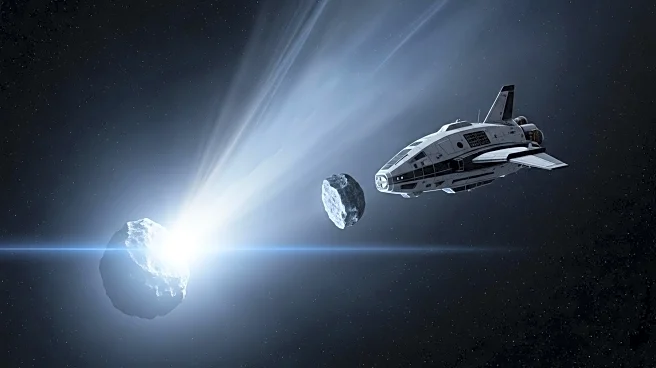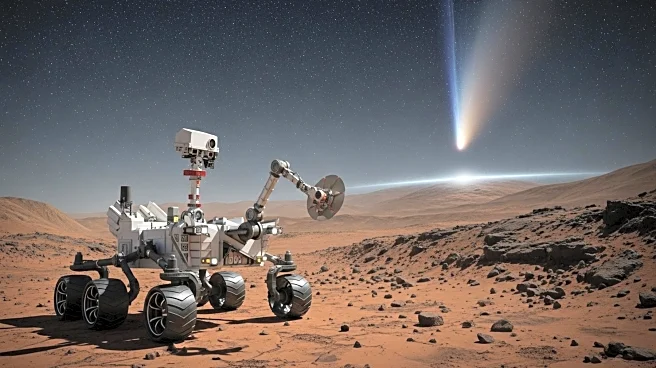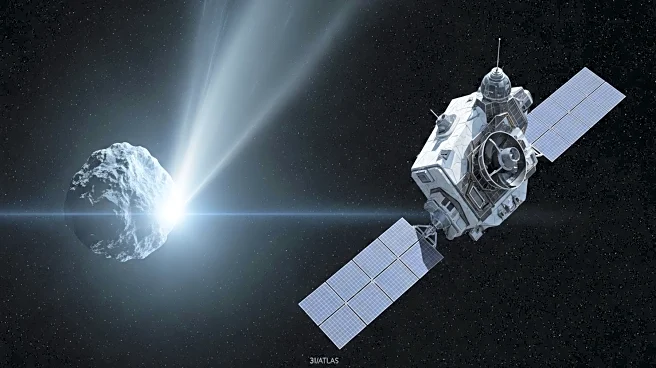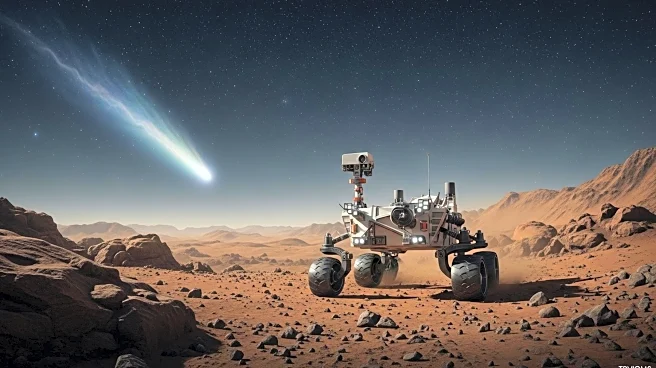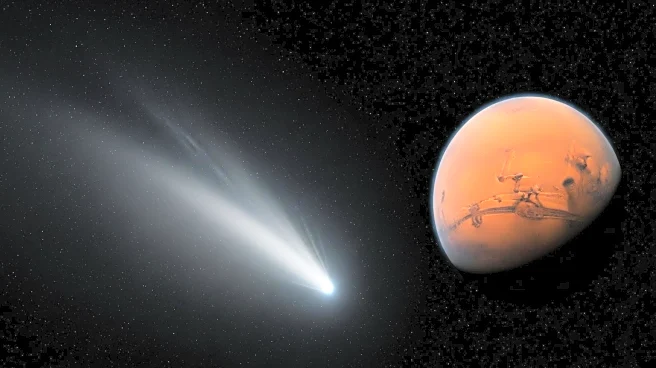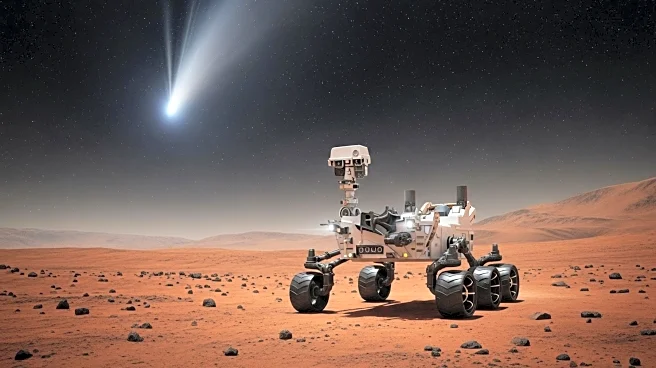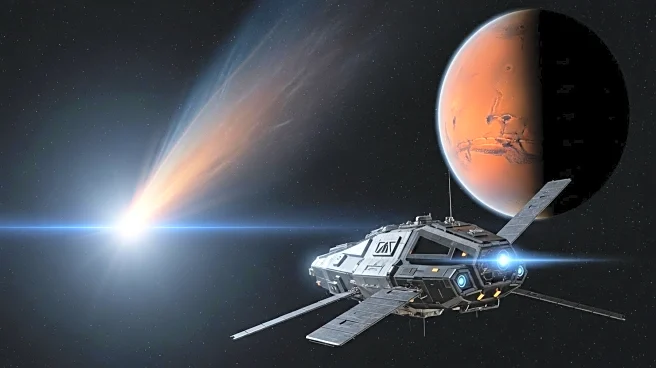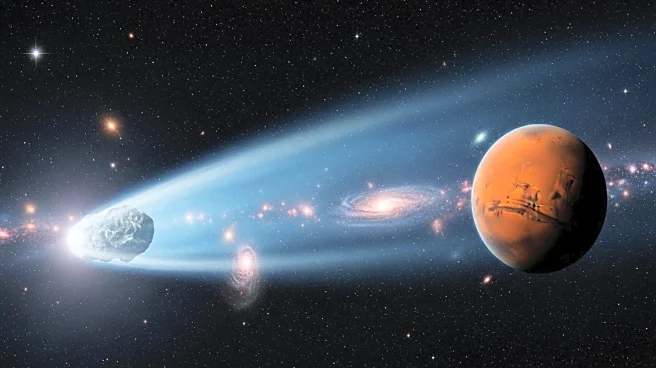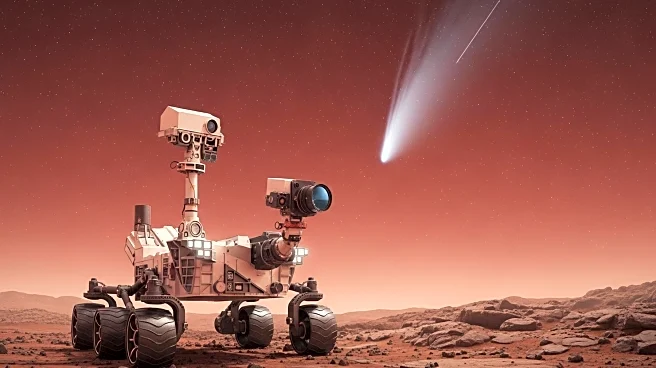What is the story about?
What's Happening?
The European Space Agency's ExoMars Trace Gas Orbiter has captured the closest view yet of the interstellar comet 3I/ATLAS as it passed near Mars. The images, taken from a distance of 18.6 million miles, show the comet as a bright, fuzzy dot. The orbiter's instruments, designed for observing the Martian surface, faced challenges in capturing the faint object. Despite this, the images provide valuable data for studying the comet's composition and trajectory. 3I/ATLAS, discovered in July, is the third confirmed interstellar object to enter our solar system.
Why It's Important?
The observation of 3I/ATLAS offers a unique opportunity to study an object from outside our solar system, providing insights into the formation and composition of distant star systems. These findings can enhance our understanding of the universe and inform future space exploration efforts. The data collected from these observations could also contribute to our knowledge of the solar system's interactions with interstellar space, potentially impacting theories about the formation and evolution of planetary systems.
What's Next?
The European Space Agency will continue to analyze the data collected from the ExoMars orbiter and other spacecraft. Additional observations are planned as the comet approaches the sun, with the potential for further insights into its composition and behavior. The comet is expected to become visible again in early December after passing behind the sun, providing more opportunities for study.
AI Generated Content
Do you find this article useful?
